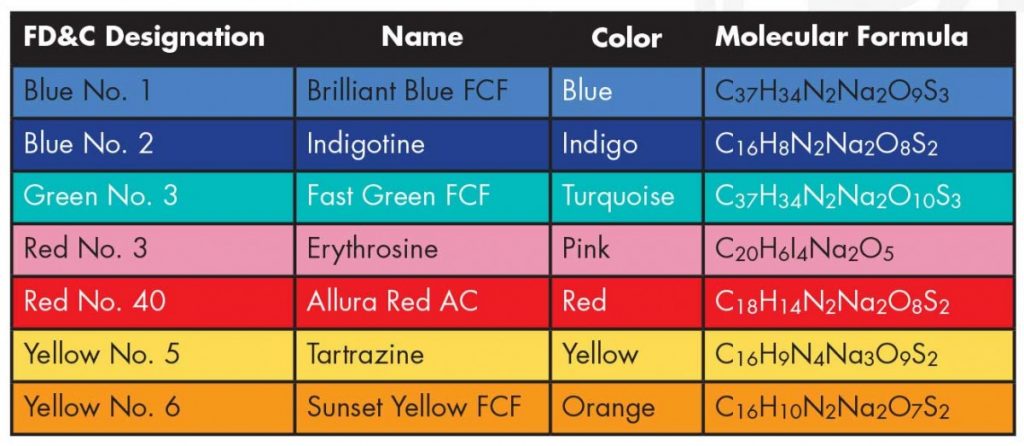Ever wondered how those bright blue candies and frosting get their vibrant hue? It’s thanks to a fascinating ingredient: blue food coloring. From the iconic blue M&M’s to the whimsical teal of a birthday cake, this coloring agent plays a crucial role in adding visual appeal to our food, but what is it actually made of? Let’s dive into the world of blue food coloring and uncover the secrets behind its vibrant shades.

Image: www.pinterest.ph
Blue food coloring is a synthetic dye that is intentionally added to food to enhance its visual appeal. Its importance lies in its ability to create a range of captivating colors across different food products, triggering an emotional response that can make food more enjoyable and appealing. In essence, it’s a tool that food manufacturers use to make their products stand out in a crowded marketplace, enticing us with its captivating blue hues. But what are the ingredients that make up these vibrant shades of blue?
The Journey of Blue Food Coloring
Before we delve into the components of blue food coloring, let’s take a quick trip down memory lane. The journey of blue food coloring begins in the early 20th century, when scientists began experimenting with synthetic dyes. Before this, natural blue dyes were extracted from sources like blueberries, but these colors were less vibrant and prone to fading. With the advent of synthetic dyes, a new era of vibrant blue food products emerged.
The Key Players: Understanding the Components
The most common blue food coloring you’ll find today is FD&C Blue No. 1, also known as Brilliant Blue FCF. It belongs to the triarylmethane class of dyes, meaning it is composed of three aromatic rings attached to a central carbon atom.
The Molecular Composition
At the heart of FD&C Blue No. 1 lies a complex molecular structure, giving it its unique color properties. The molecule is made up of a central carbon atom bonded to three aromatic rings. These rings contain specific functional groups, such as amino groups (-NH₂) and sulfonic groups (-SO₃H), which play a crucial role in the dye’s vibrant blue color.

Image: sites.middlebury.edu
Making the Connection: How Color is Achieved
The molecule’s structure creates a specific arrangement of electrons that absorb and reflect light. Light wavelengths that fall in the orange to red portion of the spectrum are absorbed, while the blue wavelengths are reflected, giving FD&C Blue No. 1 its distinctive color.
Beyond Blue No. 1: Other Blue Food Coloring Options
While FD&C Blue No. 1 is the most common, it’s not the only blue dye used in food. Another popular option is FD&C Blue No. 2, also known as Indigo Carmine. This dye belongs to the indigoid class, which features a different molecular structure than triarylmethanes.
Indigo Carmine: A Natural Twist
Compared to FD&C Blue No. 1, Indigo Carmine’s origins are more aligned with nature. It’s derived from indigo, a natural blue dye extracted from plants like the Indigofera tinctoria. However, the indigo used for Indigo Carmine is chemically treated to create the synthetic version used in food.
Creating a Spectrum of Blue
FD&C Blue No. 1 and FD&C Blue No. 2 create a range of blue hues depending on the concentration used and the other food ingredients present. For example, a higher concentration of FD&C Blue No. 1 will result in a deeper, more vibrant blue, while a lower concentration will yield a paler shade.
Safety and Regulation: Ensuring Food Safety
The use of blue food coloring, like all food additives, is closely monitored by regulatory agencies around the world, such as the Food and Drug Administration (FDA) in the United States. These agencies set limits on the amount of dye that can be used in food products to ensure safety.
The Importance of Safety Testing
Before a blue food coloring is approved for use in food, it undergoes rigorous safety testing. These tests evaluate its potential for toxicity, including long-term effects, and ensure that it doesn’t cause adverse reactions in people. This is especially important for individuals with allergies or sensitivities to certain dyes.
Balancing Color and Safety: Finding the Sweet Spot
The FDA and other regulatory bodies strive to balance the need for a vibrant food supply with ensuring consumer safety. They set acceptable daily intake levels for blue food coloring, based on scientific evidence and ongoing risk assessments.
The Future of Blue Food Coloring
The world of food coloring is constantly evolving, with new technological advancements and growing consumer demand for natural ingredients.
The Rise of Natural Alternatives
As consumers become increasingly interested in natural food options, there is a growing demand for natural blue food coloring. Several alternatives are emerging, such as dyes extracted from spirulina (a type of blue-green algae) and blueberries.
Innovation in Food Technology
Research is exploring new ways to create natural blue food coloring without relying on traditional sources. This includes using biotechnology to engineer microorganisms that produce natural blue pigments.
What Is Blue Food Coloring Made Of
In Conclusion
Blue food coloring, with its captivating shades, is a testament to the ingenuity of science and the human desire for visually appealing food. Its vibrant hues bring joy to countless food products and have played a significant role in shaping our culinary landscape. Although there is ongoing research into natural alternatives, synthetics like FD&C Blue No. 1 and FD&C Blue No. 2 continue to be widely used. The future of blue food coloring promises a blend of innovation, natural ingredients, and safety, ensuring that the vibrant blues we enjoy on our plates remain a vibrant part of our culinary experience.






